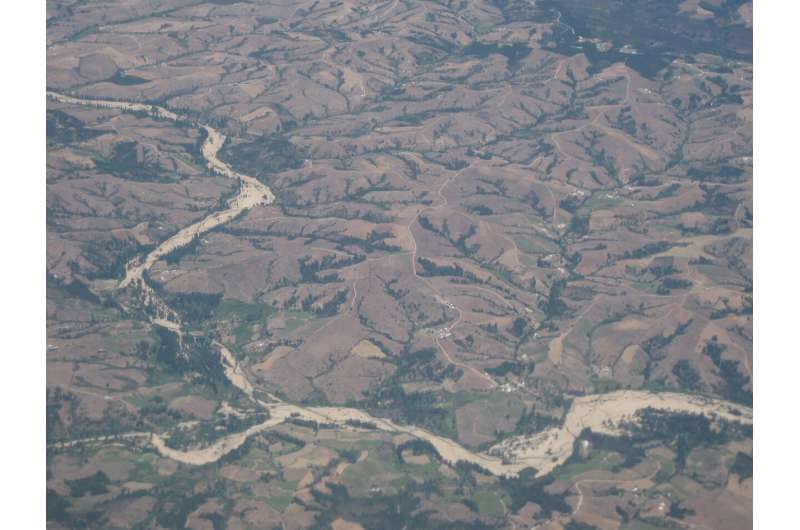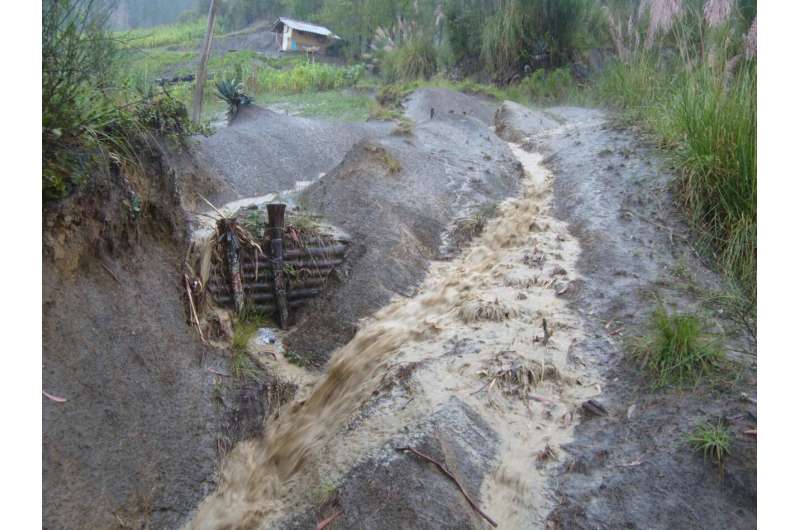European colonization accelerated erosion tenfold

Rates of soil erosion and alluvium accumulation in North America accelerated 10-fold after Europeans colonized the continent, according to new research carried out by scientists from China, Belgium and U.S..
In a paper published today in Nature Communications, the researchers show how humans have altered the North American landscape at a rate far in excess of what nature alone can achieve. The results, they suggest, may have implications for instructing land management and restoration efforts.
Prof. David Kemp from China University of Geosciences in Wuhan said "On nearly every continent, humans are altering the natural landscape, and modifying the land to meet our needs for agriculture, energy and water security. One key consequence of our actions is an increase in sediment movement, particularly soil erosion.
"We knew already that when European colonizers started farming in North America there was an increase in erosion. This led to the deposition of large amounts of river and floodplain sediment, known as alluvium. Our study quantifies this increase across the continent as a whole, and reveals an order of magnitude jump in rates of alluvium deposition soon after Europeans arrived."
Prof. Veerle Vanacker, of Université catholique de Louvain, explained, "When we use these data to quantify landscape change, we find that in the past century humans have moved as much sediment on North America as it would take natural processes to move in up to 3000 years."

She added, "What these findings mean is that anthropogenic activities have unprecedented impact on sediment dynamics. Unsustainable land use practices entail large societal costs in terms of soil fertility decline, flooding and stream degradation and direct costs for soil and watershed restoration. The study improves our ability to set benchmarks for erosion monitoring and control."
Prof. Peter Sadler of University of California, Riverside, added, "To arrive at our conclusions, we compiled and analyzed a large database of alluvium accumulation rates that extend back to a time well before the first Europeans lived on the continent.
"What really stood out in these data was the observation that for the past 40,000 years, rates of alluvium accumulation hardly changed at all and the landscape was quite stable. It was only in the last 200 years that the rates suddenly increased—right around the time that Europeans started intensive farming."
More information: David B. Kemp et al, The human impact on North American erosion, sediment transfer, and storage in a geologic context, Nature Communications (2020). DOI: 10.1038/s41467-020-19744-3
Journal information: Nature Communications
Provided by Université catholique de Louvain




















